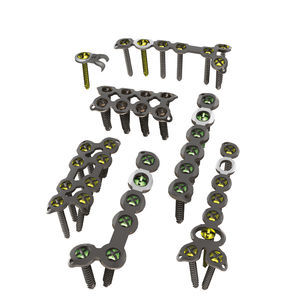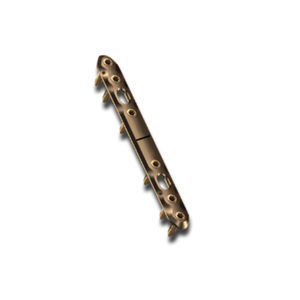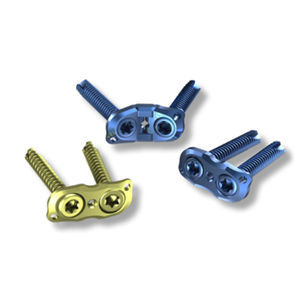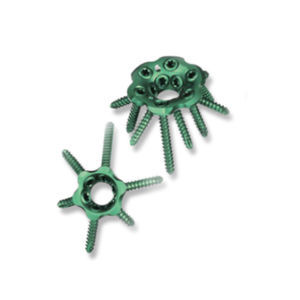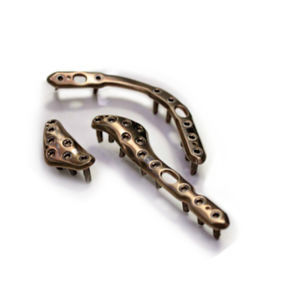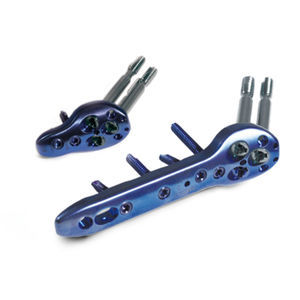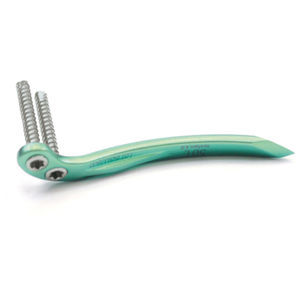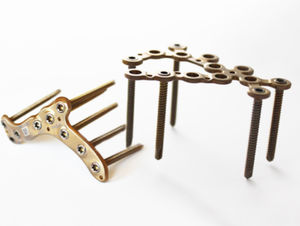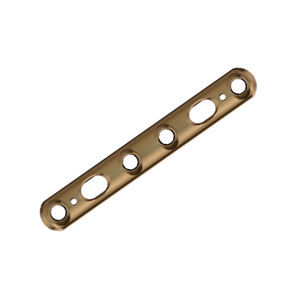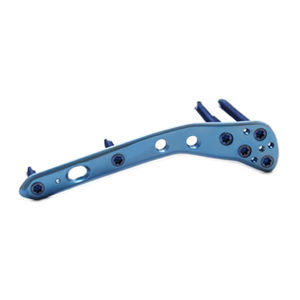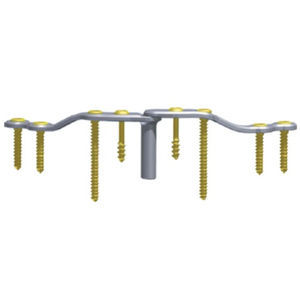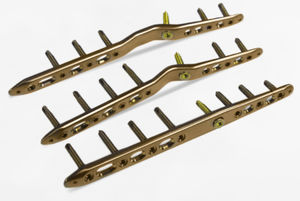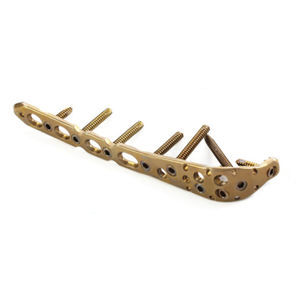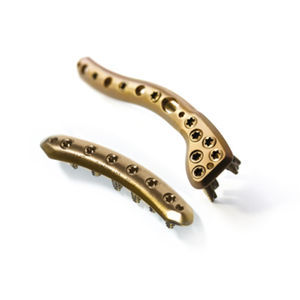
Tibia compression plate 3.709 seriesproximallockingtitanium
Add to favorites
Compare this product
Characteristics
- Applications
- tibia
- Part of bone
- proximal
- Locking
- locking
- Materials
- titanium
- Length
110 mm, 125 mm, 140 mm, 170 mm
(4.3 in, 4.9 in, 5.5 in, 6.7 in)- Number of holes
4 unit, 5 unit, 6 unit, 8 unit
Description
Design aligned with anatomy
• optimized anatomical profile
• fit to a wide range of anatomies
• facilitated anatomical reduction
Multiple plate options
• system consists of 2 types of
plates:
• - narrow
• - wide
• different variants of length
Plate window
• fracture site visualization
• fragment manipulation
• bone grafting
Tapered plate thickness
• minimized soft-tissue irritation in epiphysis
• high plate strength in the shaft and metaphysis
Chamfered plate borders
• minimized soft-tissue irritation
• improved stress distribution
Bottom undercuts of the shaft part
• limited bone-to-plate contact
• better blood circulation of periimplant tissues
Beveled tip
• easy percutaneous insertion
2 anatomically directed proximal screws
• support of articular surface
• direction parallel to tibia plateau for direct subchondral insertion
• diverging screws for complete support of tibia plateau
2 kickstand screws
• enhanced plate and fixation stability
Aiming block
• fast, collision-free insertion of screws in pre-determined directions
Locking hole design
• the screws heads do not protrude above the surface of the plate what significantly reduces tissue irritation
• increased strength of the screw-to-plate threaded connection
• bottom extrusion reduces surface contact area with the bone
Catalogs
Locking plates
171 Pages
Related Searches
- Bone plate
- Compression plate
- Metallic compression plate
- Locking compression plate
- Titanium compression plate
- Distal compression plate
- Compression bone screw
- Metallic compression bone screw
- Interbody fusion cage
- Orthopedic surgery surgery set
- Proximal compression plate
- Forearm compression plate
- Mid-shaft compression plate
- Arthrodesis nail
- Lateral compression plate
- Tibia compression plate
- Radius compression plate
- PEEK interbody fusion cage
- Humeral compression plate
- Metallic intramedullary nail
*Prices are pre-tax. They exclude delivery charges and customs duties and do not include additional charges for installation or activation options. Prices are indicative only and may vary by country, with changes to the cost of raw materials and exchange rates.



